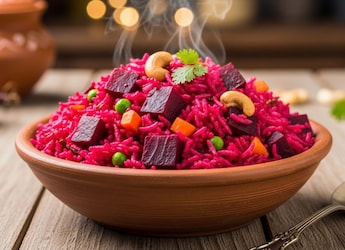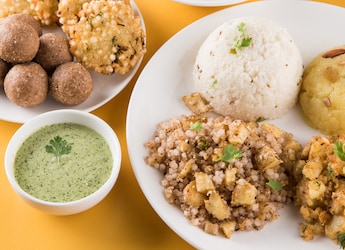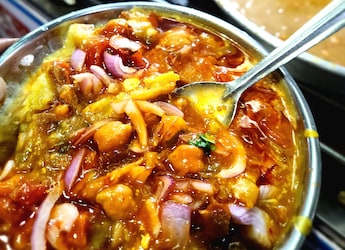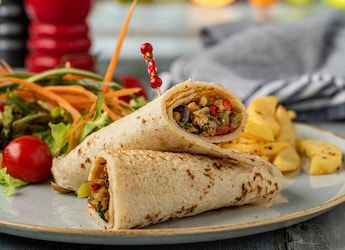



Lehsuni Methi Paneer works well in home kitchens because it focuses on balanced flavour rather than intensity.

These combinations make beetroot pulao suitable for both lunch and dinner, depending on how hearty you want the meal to be.

This is also the season when Indian kitchens quietly return to leafy greens that have always been part of traditional winter cooking.

Winter ingredients offer more benefits in chutney form because they retain freshness, support digestion, and add natural warmth.

As the festive season sweeps across India with Navratri, Durga Puja and Dussehra preparations in full swing, another celebration waits just around the corner. Karwa Chauth, one of the most cherished festivals for married women, will soon light up homes across North India.

Breakfast is often called the most important meal of the day for a reason. It sets the tone for energy levels and productivity, helping you stay focused and active.

Bottle gourd (lauki) might seem like a humble vegetable, but it is full of benefits. It is low in calories, rich in fibre, and has high water content, which keeps the body hydrated and aids digestion.

This nine-day festival is dedicated to Goddess Durga, during which her devotees worship her with unwavering faith.

In North India, effigies of Ravana are burnt to mark Lord Rama's triumph, a ritual also believed to represent the destruction of negativity within us.

Kasuri Methi refers to dried fenugreek leaves that are widely used to add depth of taste and aroma to Indian dishes. With its slightly bitter yet aromatic flavour, it brings a distinctive note that enhances the overall character of food.

Navratri is a popular festival celebrated with great pomp across India. Although Navratri occurs four times a year, two of these - Chaitra Navratri (around March-April) and Sharad Navratri (around September-October) - hold special significance.

Veg Jaipuri is a simple, rich, and visually vibrant curry. Similar to North Indian mixed vegetable curry, it is prepared with a combination of several vegetables, paneer, and aromatic spices.

This high protein wrap brings together boiled chickpeas and paneer, two ingredients that support weight management. Chickpeas are rich in fibre, which promotes satiety and keeps hunger at bay for long hours.

The itching caused by arbi is linked to calcium oxalate crystals present in the vegetable. These needle-like crystals can irritate the skin, especially when arbi is peeled raw.

Mattha Aloo stands out for its simplicity. Made with basic ingredients and cooked in minutes, this dish is light, refreshing and deeply satisfying.

Ragda chaat is a popular Mumbai street food made with white peas, cooked with potatoes until soft, and combined with onions, tomatoes, spices, chutneys, and lemon juice.

The Frankie is prepared with a crisp potato patty wrapped in a thin roti, layered with shredded carrots, onions, tangy chutneys and a special Frankie masala.

What you do after eating can make or break your digestion. From tea and coffee to workouts and naps, here are 5 common mistakes to avoid after a meal - and what to do instead for a healthier gut.

Craving something hot on a rainy morning? Try these quick and healthy Indian breakfast recipes that are easy to make and perfect for monsoon days.

Washing vegetables the wrong way can lead to nutrient loss. Many people wash them after bringing them from the market and then wash them again after cutting, which drains some of the nutrients.

Food in the mind, Bollywood in the heart - these two things often shimmer in Payal's writing. Besides penning thoughts, Payal enjoys a playful tango with new and delicious recipes. Roaming around is her jam; whether catching up on the latest flicks or grooving to the beat, Payal knows how to keep her empty moments brimming with flavour and rhythm.